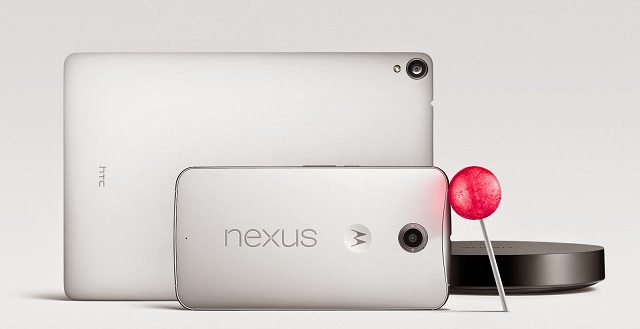Google’s new version of its mobile operating system, called simply Android 5.0 Lollipop, is meant to make an even more seamless experience out of using different devices. Nexus 6 and Nexus 9 are the devices used for showcasing this new platform.
Mountain View has been looking for consistency in its Android operating system across different devices even since the introduction of Ice Cream Sandwich, a version that brought together Gingerbread and Honeycomb users under the same roof. With the launch of Android 5.0 Lollipop and its even more consistent design (called Material Design, actually), switching between tablets and smartphones won’t mean that people have to learn how to go around each one’s UI. On top of that, Lollipop confers more control over the device’s settings and notifications, and improves the battery life by up to 90 minutes. In our day and age, that’s a significant improvement.

The Nexus 6 smartphone and the Nexus 9 tablet, both pictured above along an unexpected black box, are powered by Android 5.0 and are meant to give the world a taste of the Lollipop. While the Motorola-built Nexus 6 was expected to come with a 5.9″ display, Google respected the name-dimension correlation and equipped the smartphone with a 6″ 2560 x 1440 display with a 493 ppi pixel density.
https://www.youtube.com/watch?v=wk-PY2dBKaA
In terms of internal memory, the Nexus 6 comes with either 32 or 64GB of internal storage and 3GB of RAM, which is more than enough both for holding and running some of the most demanding Android apps out there. This wireless-charging device packs a Qualcomm Snapdragon 805 chipset that includes a quad-core 2.7 GHz Krait 450 CPU and an Adreno 420 GPU. And just in case the Li-Po 3220 mAh battery wasn’t impressive enough, one of the main novelty factors about this phone must be its Turbo Charger, which enables you to use the Nexus 6 for up to 6 hours with just a 15-minute charge.
The HTC Nexus 9, on the other hand, with its brushed metal sides and 8.9-inch 1536 x 2048 screen, is a nice change from the 7″ gadgets. The bad thing about this is that it has a smaller resolution than the Nexus 6, and hence a lower pixel density. Apart from the 64-bit Tegra K1 SoC that’s powering this tablet, there’s really not much to say about it that hasn’t been said before, either in the leaks or the data coming from the FCC.
Google’s Nexus line used to be known for its affordable, yet great performing devices. While the performance is still there, I’m not sure we can still call these devices affordable. According to re/code, the Nexus 6 will be available in Midnight Blue or Cloud White, and will sell in the Play Store for $649. With the 16GB version starting at $399 and the 32GB retailing for $479, the Nexus 9 gets uber-expensive if you opt for the LTE version, which will sell for $699. On the bright side of things, expect the Nexus 5 to get a lot cheaper once Google’s new toy hits the stores.
Be social! Follow Walyou on Facebook and Twitter, and read more related stories about the visit paid to the FCC by the HTC Nexus 6 tablet, and the Motorola Nexus 6 Shamu.










